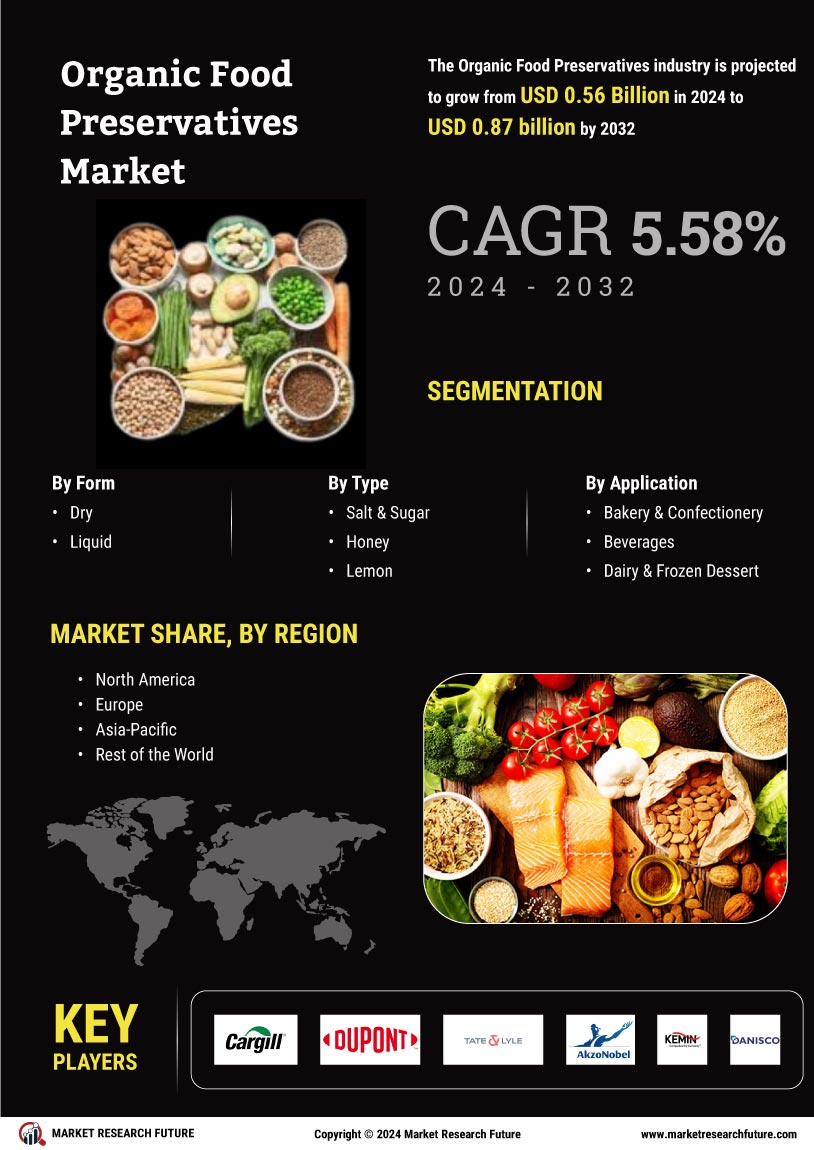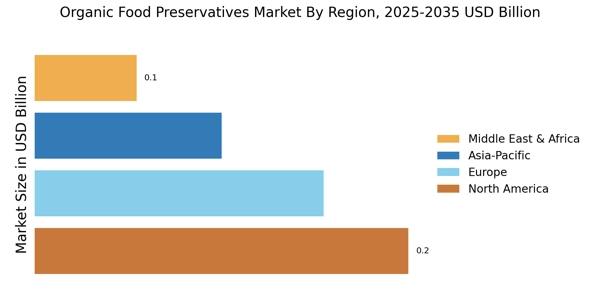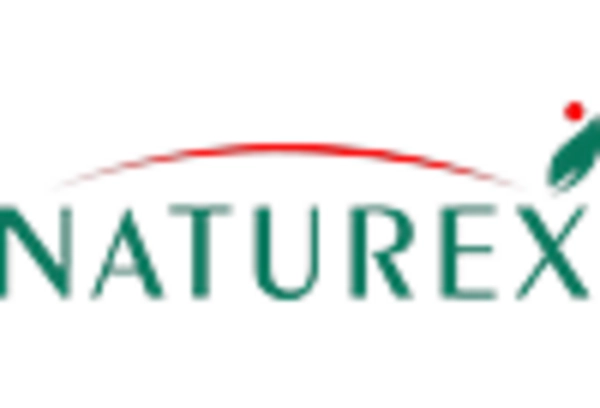Organic Food Preservatives Market Summary
As per MRFR analysis, the Organic Food Preservatives Market Size was estimated at 0.56 USD Billion in 2024. The Organic Food Preservatives industry is projected to grow from 0.5913 in 2025 to 1.018 by 2035, exhibiting a compound annual growth rate (CAGR) of 5.58 during the forecast period 2025 - 2035.
Key Market Trends & Highlights
The Organic Food Preservatives Market is experiencing robust growth driven by consumer preferences for natural and clean label products.
- The demand for clean label products is rising, particularly in North America, which remains the largest market for organic food preservatives.
- Sustainability and environmental concerns are increasingly influencing purchasing decisions, especially in the Asia-Pacific region, the fastest-growing market.
- Health and wellness focus is driving innovation in preservation techniques, with liquid preservatives emerging as the fastest-growing segment.
- Rising consumer awareness and regulatory support for organic products are key drivers propelling the market forward, particularly in the salt and sugar segment.
Market Size & Forecast
| 2024 Market Size | 0.56 (USD Billion) |
| 2035 Market Size | 1.018 (USD Billion) |
| CAGR (2025 - 2035) | 5.58% |
Major Players
BASF SE (DE), Cargill, Incorporated (US), DuPont de Nemours, Inc. (US), Kemin Industries, Inc. (US), Naturex S.A. (FR), Tate & Lyle PLC (GB), Chr. Hansen Holding A/S (DK), Givaudan SA (CH), Sensient Technologies Corporation (US)


















Leave a Comment